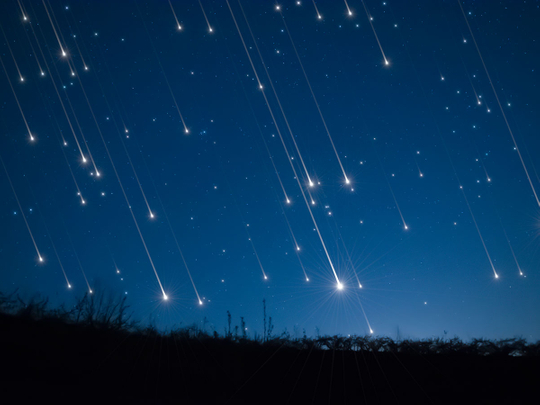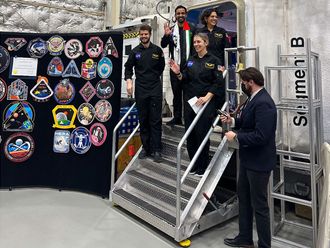
Abu Dhabi: Stargazers in the UAE can expect to see around 120 meteors per hour streak across the night sky during the peak of the annual Geminid meteor shower on Monday night.
The Geminids occur every year from around December 4 to 16, peaking on the night of December 13 and into the morning of December 14. This is the shower’s ‘maximum’, the time when most meteors fall per hour.
The shower owes its name to the constellation Gemini because the meteors seem to emerge from this constellation in the sky. Meteors should be visible across the entire sky, though from the UAE, the radiant of the shower will appear 58 degrees above the north-eastern horizon at midnight. This means residents may be able to see around 120 meteors per hour since the radiant will be high in the sky, maximising the chance of seeing meteors.
The shower will be visible across the entire globe except for Antarctica, which gets 24 hours of sunlight per day during this part of the year.
What causes meteor showers?
Unlike most other meteor showers, the Geminids are not associated with a comet but with an asteroid, named 3200 Phaethon. The asteroid takes about 1.4 years to orbit the Sun.
Geminid’s parent – 3200 Phaethon – is a “rock comet”. Every year, in December, Earth crosses the orbital path of an object called 3200 Phaethon - a mysterious body that is sometimes referred to as a rock comet. The debris shed by 3200 Phaethon crashes into Earth’s upper atmosphere at some 130,000km/h to vaporize as colourful Geminid meteors.
Getting closer
The Geminid meteor shower is nearly 200 years old, according to known records — the first recorded observation was in 1833 from a riverboat on the Mississippi River in the USA — and is still going strong. In fact, it’s growing stronger. That’s because Jupiter’s gravity has tugged the stream of particles from the shower’s source ― the asteroid 3200 Phaethon ― closer to Earth over the centuries.
Viewing tips
Dubai Astronomy Group CEO Hasan Al Hariri said: “You don’t need any special equipment or a lot of skills to view a meteor shower. All you really need is a clear sky and dark site.”
-Dress for the weather, and make sure you are comfortable, especially if you plan to stay out long. Bring a blanket or a comfortable chair with you.
-Find a secluded viewing spot, away from the city lights. Your eyes may take 10 minutes to get used to the dark.
-Lie down on the ground and look up in the direction of the radiant. Use Dubai Astronomy Group’s Interactive Meteor Shower Sky Map.










